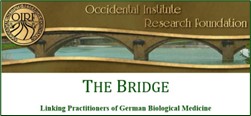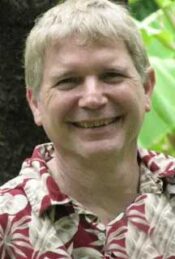Using Pulsed Electromagnetic Field Therapy
Allergy is one of those topics that generate a great deal of debate. There is even disagreement about basics, such as what allergies are, the mechanisms of allergy reactions, methods of testing, etc. I am not going to address these issues here, as there are volumes of information available. Rather, I am going to present a brief description of a method of therapy I’ve developed by combining and expanding two separate approaches.
Sensitivity Removal Technique (SRT) is an allergy therapy developed by Sherri Tenpenney, DO. SRT itself was developed from NAET and other similar approaches.
The process of SRT is outlined below:
- The patient is checked for switching, which is a disruption in the electromagnetic field of the body. If present, it must be corrected or therapy is postponed.
- On the first visit, the patient is checked for a relative degree of toxicity. If their toxicity score is too high, they must first go through two weeks detox before starting therapy.
- Muscle testing is used to determine which agent(s) a person is reacting to. The first three treatments are typically standard for everyone, covering a wide variety of items. After the third treatment, ferrum met. is used to determine which agent a patient will be treated for on each visit.
- The items that the person reacts to are placed in contact with the patient. In addition, a finger stick blood sample is taken, and is used in every treatment.
- Once these items are in contact with the patient, they are checked for finger positions (mudras), which represent how an area is affected. The patient holds these fingers together throughout the rest of the testing. The positions and indications are:
- Thumb and first finger touching to form an O: Anatomy
- Thumb and second finger: Physiology
- Thumb and third finger: Emotional
- Thumb and little finger: Circulation
- Next, the organ affected is found by touching the appropriate contact points on the body. The corresponding sarcode is then added to the above items.
In SRT, the next step is treatment using acupressure while in contact with all of the above items. Although this approach has good success, I believe that there are more effective interventions than acupressure for this purpose. In addition, there are items not contained in the usual SRT allergy set that require attention. In response to this, I added a number of items to expand coverage.
I also dropped the use of acupressure and replaced it with Pulsed Electromagnetic Field Therapy using the Medisend Super device produced by Advanced Medical Systems. We use the frequencies of 3.0/300 with an intensity of 3 for 10 minutes per treatment as listed in the Medisend Super III manual. All of the items tested for above are placed in the Medicine Cup during the PEMF session.
Once the treatment is finished, the patient must not eat or drink anything other than purified water from a glass container. In addition, for the second treatment ONLY (the session for chemicals), the person must not touch any items that might expose them to any environmental chemicals.
There are no time limits (other than the three hours) on the frequency of treatments. Most people will need between 15-20 sessions. The sessions are painless and non-invasive, making this an ideal approach for children and the needle phobic.
We have used this approach for less than a year, and don’t have firm statistics regarding results. However, a preliminary review is very positive, indicating response rates near or above 90%. I’ll continue to follow the results and report at a later time with more definitive numbers. In the meantime, I suggest that you look at more information regarding SRT and PEMF and consider adding them to your list of options for patients.
 An Exclusive Article for Members
An Exclusive Article for Members
From THE BRIDGE Newsletter of OIRF
Published October 2012
© Copyright 2012, Dr. Ted Cole, OH USA



